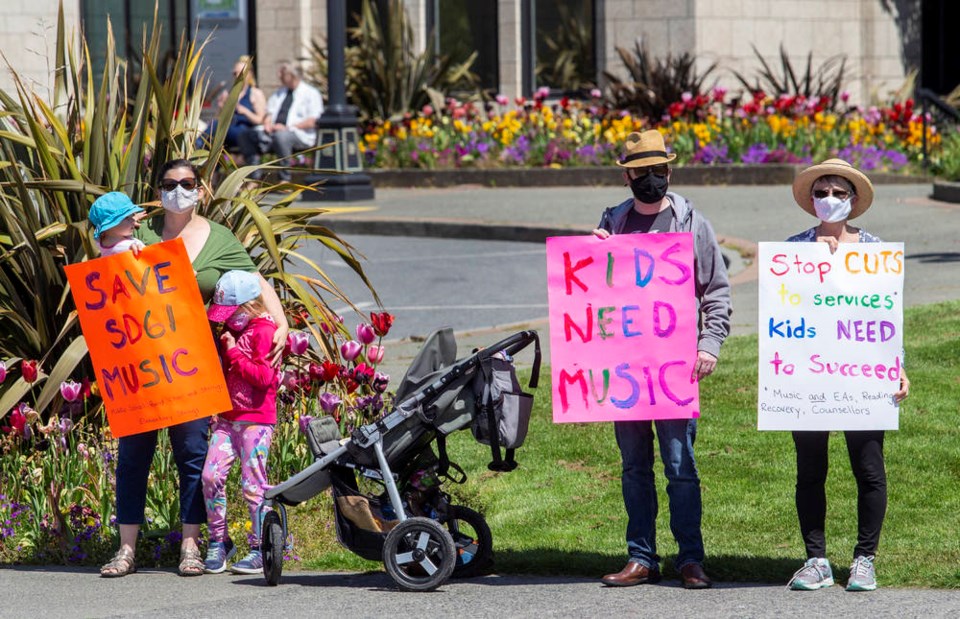Controversial proposed cuts to music in the Greater Victoria School District have been held to five per cent, allowing middle-school band, elementary-school strings and other programs to continue.
That amounts to cutting about $80,000 from music-related budget items totalling $1.3 million, said school board chairwoman Jordan Watters.
There were some reductions to other services, but no outright cuts. Funding for educational assistants and youth/family counsellors was maintained, while reductions included $484,227 to administration at the district offices, $611,419 to the international-student program and $496,364 to vice-principals’ administrative duties.
On Thursday night, the school board was able to produce a balanced $254-million 2021-22 budget by paring down an $8.7-million deficit. School boards must submit balanced budgets to the provincial government each year by June 30.
Watters said the key to balancing the budget was adding $4.8 million in accumulated surplus funds — similar to a contingency fund — but that leaves the fund at just $800,000 for 2022-23.
“What it means is we’re looking at a big deficit next year.”
Thursday’s meeting had been postponed from earlier in the week in “respect and solidarity” with the Indigenous community after the discovery of the remains of 215 children in unmarked graves at the former Kamloops Indian Residential School, Watters said.
Cindy Romphf, president of the Greater Victoria Music Educators’ Association, applauded the new budget. Students were happy to hear about the news in class Friday, she said.
“It is good news overall, compared to what they presented on April 15, for sure,” she said. “We’re still able to maintain all our programs. Elementary strings has been reinstated for the year. Band, choir, strings — they’re all still there.”
Romphf, a music teacher at Cedar Hill Middle School, said she and others hope to be involved in the next budget cycle.
“The plan is to start dealing with it in the fall, when the new budget process starts,” she said. “Hopefully the school district has learned that you need to consult people from the beginning if you’re going to be making cuts.”
The prospect of music cuts, as well as cuts to a number of other services, brought many people out to demonstrations over the past several weeks, including one that saw protesters lining Douglas Street from Boleskine Road — site of school district headquarters — to the legislature.
The show of public concern was a factor in the school district appointing former Saanich School District secretary-treasurer Joan Axford as an independent advisor to look at other ways of addressing budget issues.
Jennifer Orrange said she and her two sons were at all of the rallies — Benjamin is in Grade 7 at Cedar Hill Middle School and is in strings, band and choir, while Emilio is in Grade 5 at Doncaster Elementary and is in the strings program.
“I’m relieved because it was such a blow to be confronted with the potential that these programs weren’t going to be offered at all,” Orrange said.
Watters said the board is “learning and improving” as members better understand the budget and how to improve the process.
“These were very difficult decisions, which I know all members of our board agonized over,” she said. “We all have a lot of work to do going forward as we continue budget discussions this fall.”
She said convincing the province to increase funding for public education is a top priority. “This conversation would be different if government put a higher priority on education.”
The district is the Island’s largest, with more than 20,000 students and 47 schools spanning six municipalities, and also serves the Esquimalt and Songhees First Nations.



